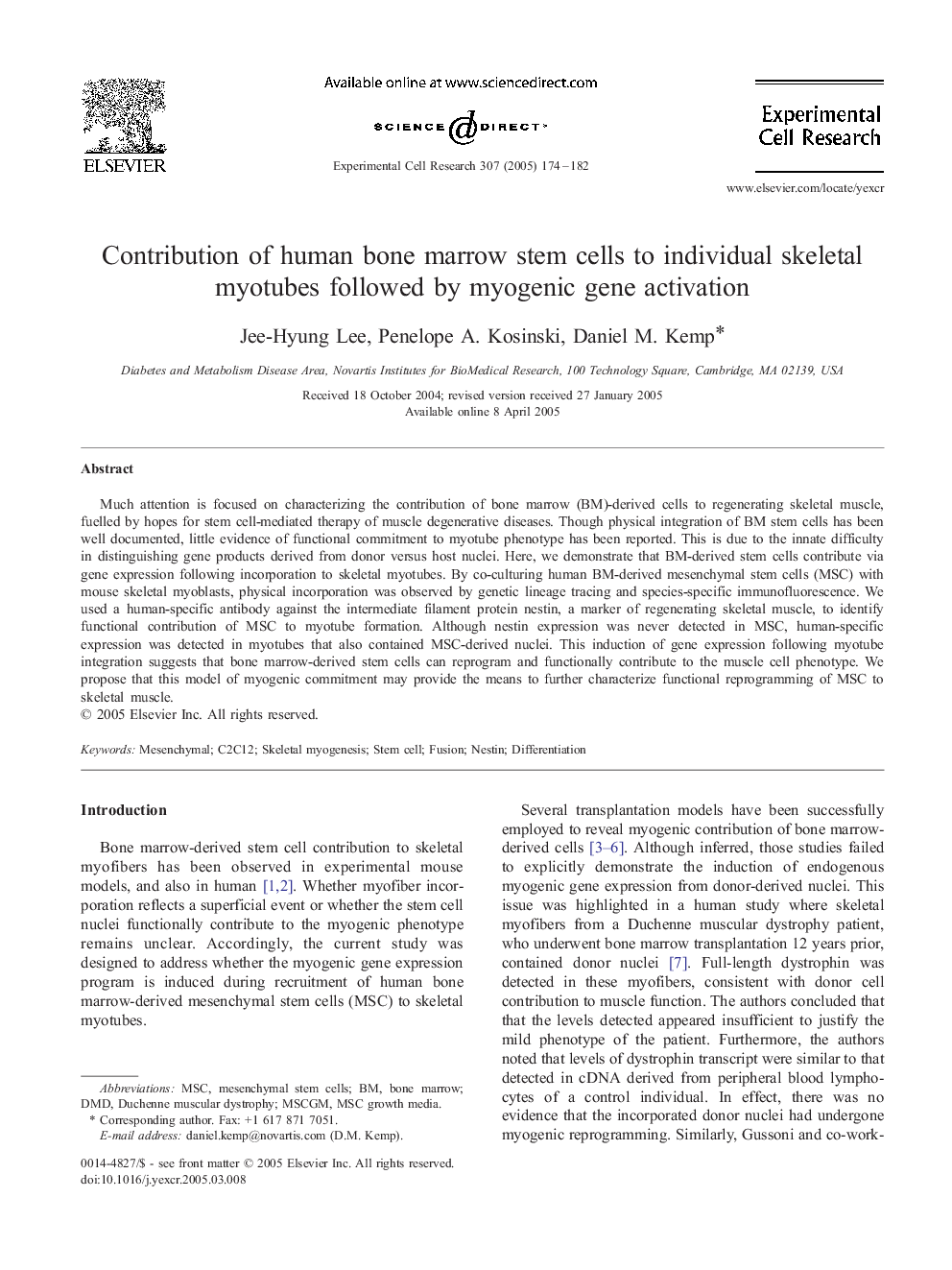| Article ID | Journal | Published Year | Pages | File Type |
|---|---|---|---|---|
| 10905205 | Experimental Cell Research | 2005 | 9 Pages |
Abstract
Much attention is focused on characterizing the contribution of bone marrow (BM)-derived cells to regenerating skeletal muscle, fuelled by hopes for stem cell-mediated therapy of muscle degenerative diseases. Though physical integration of BM stem cells has been well documented, little evidence of functional commitment to myotube phenotype has been reported. This is due to the innate difficulty in distinguishing gene products derived from donor versus host nuclei. Here, we demonstrate that BM-derived stem cells contribute via gene expression following incorporation to skeletal myotubes. By co-culturing human BM-derived mesenchymal stem cells (MSC) with mouse skeletal myoblasts, physical incorporation was observed by genetic lineage tracing and species-specific immunofluorescence. We used a human-specific antibody against the intermediate filament protein nestin, a marker of regenerating skeletal muscle, to identify functional contribution of MSC to myotube formation. Although nestin expression was never detected in MSC, human-specific expression was detected in myotubes that also contained MSC-derived nuclei. This induction of gene expression following myotube integration suggests that bone marrow-derived stem cells can reprogram and functionally contribute to the muscle cell phenotype. We propose that this model of myogenic commitment may provide the means to further characterize functional reprogramming of MSC to skeletal muscle.
Keywords
Related Topics
Life Sciences
Biochemistry, Genetics and Molecular Biology
Cancer Research
Authors
Jee-Hyung Lee, Penelope A. Kosinski, Daniel M. Kemp,
